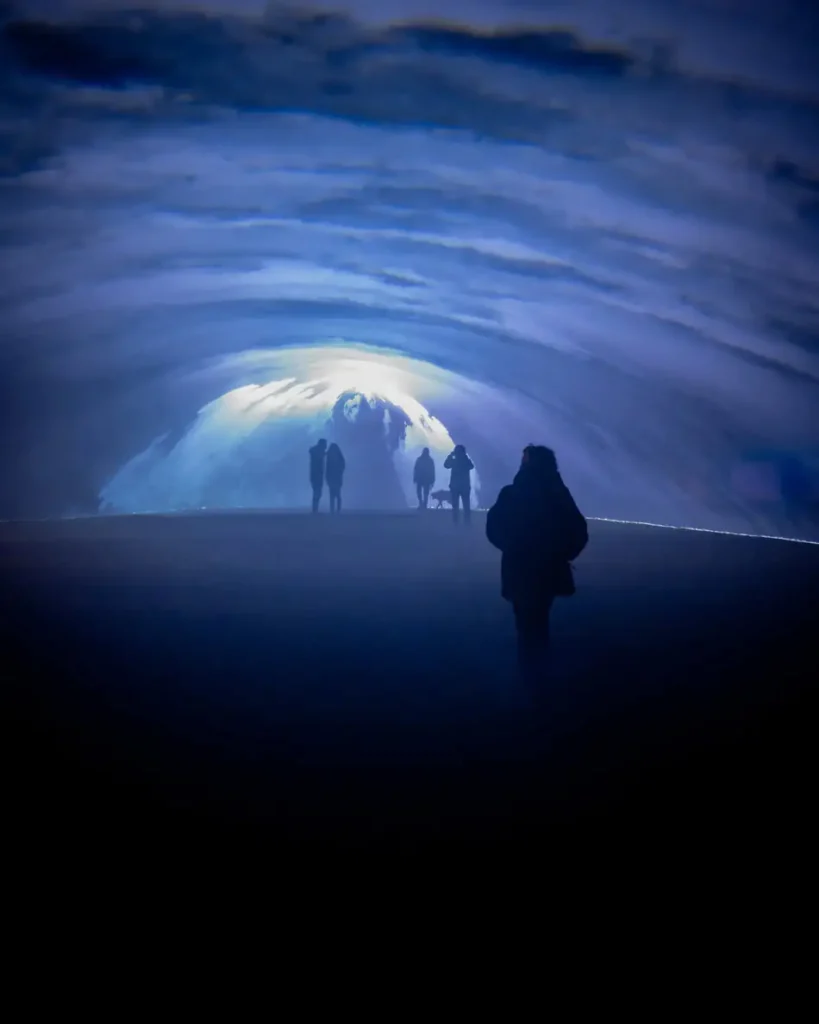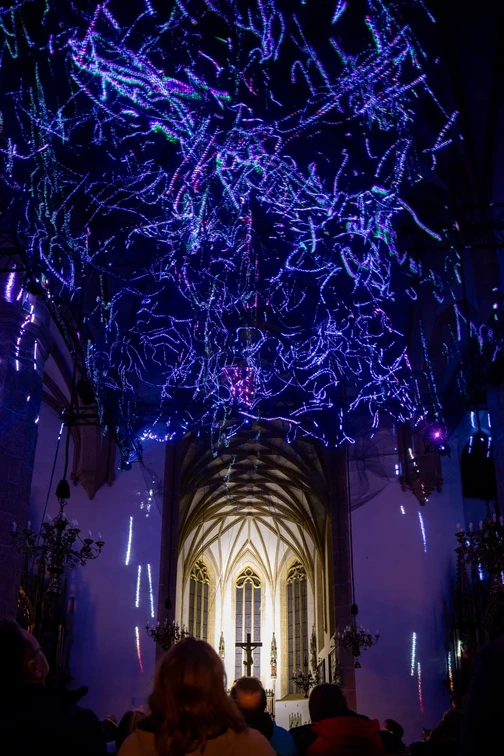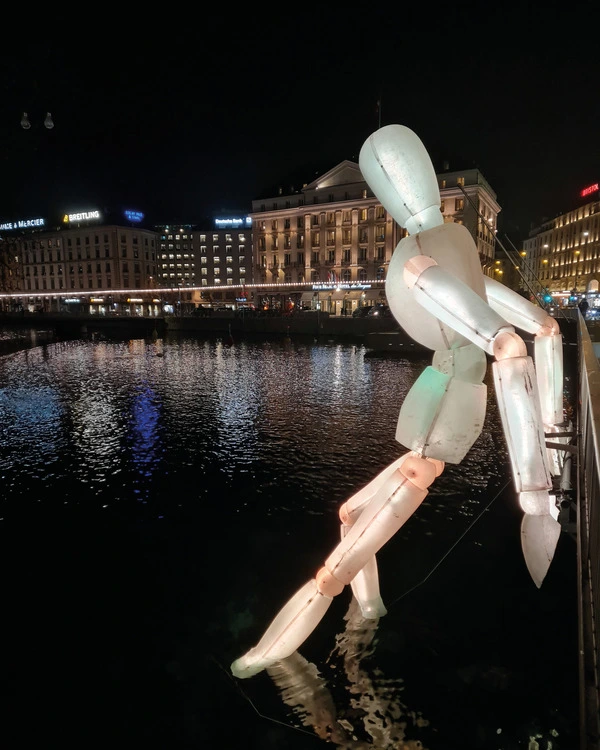What is Festival Luce?
Festival Luce is an international festival that brings together light art, technology and urban culture in order to create a transformative experience for visitors. The festival uses light as a means for reflection and artistic creation in public spaces, encouraging audiences to explore their cities in a completely different way.
Festival Luce mainly strives to create ephemeral works of art that are based on light and have an impact on the way we see our usual environments, the streets where we walk and the squares in which we live our lives.
The event allows host cities to adopt a position as prominent cultural destinations, turning them into international hubs of art and creativity.

Through light, the festival is also a platform for contemporary artists to exhibit their work in the biggest art gallery there is: the street. Festival Luce is focused on creating an experience that connects individuals with the city, transforming its squares and buildings into a bright showcase for art.
The raison d’être of Festival Luce is for light to be a catalyst for a cultural conversation in which both the local community and the visitors it welcomes can take part. It is also a proposal for a kind of entertainment that goes further, that explores culture in more detail and goes beyond a visible surface.


Festival Luce as a symbol of cultural innovation
Festival Luce is firmly committed to cultural innovation. Each edition strives to explore new forms of interaction between art and technology. By merging contemporary art and light, the festival successfully transforms public spaces. Festival Luce is about much more than lights; it encourages passers-by to think about difficulties or concepts which are relevant in all of our day-to-day lives.
Festival Luce explores the power of light as an artistic element, using interactive art, digital projection and IT to create experiences that bring together physical and virtual elements. It also supports art for all, as it is a light festival which displays its works in a public space so everybody can see it. This breaks away from the usual way of consuming art and enjoying temporary exhibitions, such as this Festival Luce.
The cultural innovation of Festival Luce lies in its capacity to integrate light into art in a free-flowing way, where audience participation turns into a key part of the experience. Not only do the interactive light installations enable visitors to reflect; they also become an active part of the work, changing their behaviour and the way in which they interact with the space. This combination transforms public spaces into laboratories, where digital creativity serves culture.
In this respect, Festival Luce is established as an avant-garde project, offering a platform for development and artistic experimentation, while promoting an exchange of ideas and collaboration at an international level, contributing to the growth of digital and light art.
National and international influence
The aim of Festival Luce is to have an impact around the world, setting a benchmark for light festivals and contemporary art. By expanding to different cities, the festival seeks to become established as a platform for cultural revitalisation that attracts audiences, boosts local trade and gives even more value to cities as creators of culture.
Every edition of Festival Luce strives to be a driving force for cultural growth in the host cities, in addition to putting each of them on the world map as a cultural destination. Its international influence is based on its capacity to connect people through light and art, forming an experience that goes beyond simply displaying works.
One of its cornerstones is the participation of internationally renowned artists, whose works go beyond borders and attract visitors from around the world.
The festival also acts as a bridge to link different cultures and perspectives. By bringing together international artists, Festival Luce encourages cultural dialogue and an exchange of ideas, showing that light and art go beyond borders. Its collaborations with cultural institutions put it on the world map of innovative cultural events, ensuring a constant flow of visitors, ideas and recognition.
The beginning of light in art
Light has always been a key element in art; not just as a technical resources, but as a vehicle for exploring perception and emotion. Since ancient times, artists have used light to connect physical and spiritual aspects, transforming their works into meaningful experiences.
In the Middle Ages, light symbolised divinity, particularly in churches. Stained glass windows, with their colours and reflections, did not only light temples; they also invoked a celestial presence. Artistic use of this link between light and transcendence marked a milestone.
During the Renaissance, artists such as Leonardo da Vinci and Caravaggio explored light to give volume and depth. In their works, light created atmospheres full of symbolism, bringing together divine, human and emotional elements.
The 20th century witnessed a turning point with movements such as Futurism and Op Art, which focused their aesthetics on light. Artists such as Umberto Boccioni and Victor Vasarely used patterns and optical effects to capture modernism and dynamism.
In the second half of the 20th century, light became established as an autonomous artistic resource. Dan Flavin, with his fluorescent tube installations, transformed spaces and perception, showing that light could be an art in itself.
Festival Luce soaks up this progress over time, using light as a pure art form to transform spaces, arouse feelings and connect audiences with creativity.
